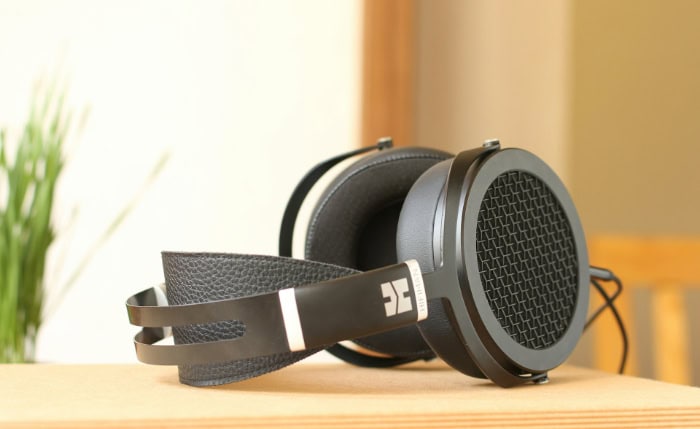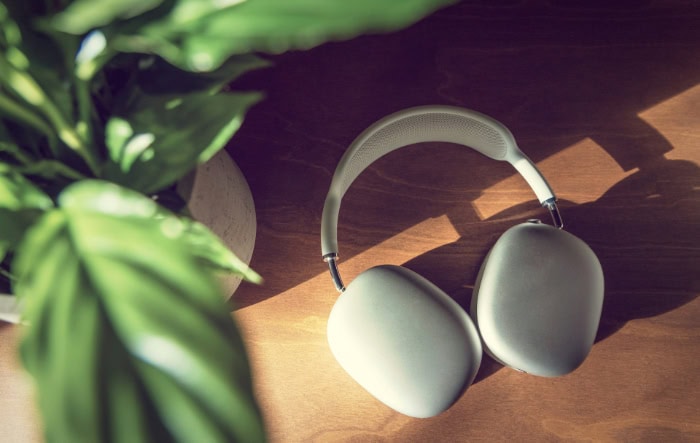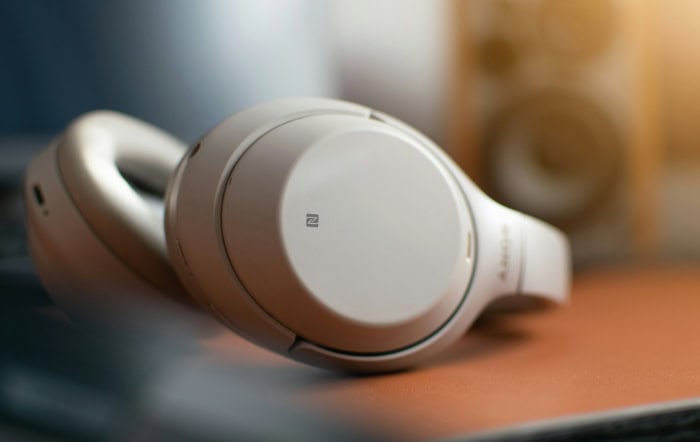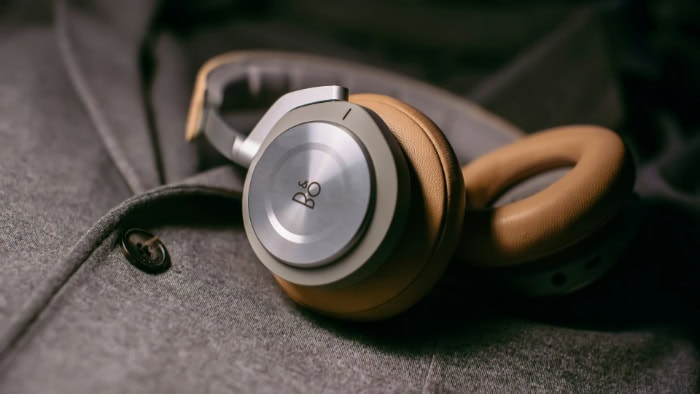What Is Soundstage in Headphones? Elevate Your Audio Game

Soundstage in headphones can transform an ordinary listening session into an immersive auditory experience. Imagine being able to pinpoint the exact location of each instrument in a song or feeling like you're in the middle of an intense gaming battle with sounds coming from all directions.
This is the magic of soundstage, a concept that audiophiles and casual listeners alike can appreciate.
Definition and Importance of Soundstage
Soundstage is a term often used by audiophiles to describe the perceived three-dimensional space created by audio playback. It refers to the ability of headphones to create a sense of spatial awareness, making it feel as though the sounds are coming from different directions and distances.
This concept is crucial for an immersive listening experience, whether you're enjoying music, watching movies, or playing games.
What is Soundstage?
Soundstage can be thought of as the virtual space in which audio elements are placed. In a high-quality soundstage, listeners can perceive the location of different instruments, vocals, and sound effects as if they were positioned around them in a three-dimensional space.
This spatial perception is achieved through the careful manipulation of audio signals.
While both headphones and speakers can create a soundstage, there are notable differences between the two. Speakers typically have an advantage in creating a more natural and expansive soundstage because they interact with the room's acoustics.
Headphones, on the other hand, provide a more intimate and direct listening experience, with the soundstage being created entirely within the confines of the ear cups. Despite these differences, many high-end headphones are capable of producing an impressive soundstage that rivals that of speakers.
Why Soundstage Matters
A well-defined soundstage can significantly enhance the listening experience. Here are a few reasons why soundstage is important:
- Immersive Listening Experience: A good soundstage can make you feel like you're in the middle of a live performance or a movie scene, with sounds coming from all directions. This level of immersion can make your audio experience more engaging and enjoyable.
- Enhanced Clarity and Separation of Instruments: Soundstage helps in distinguishing between different instruments and vocals. This separation allows listeners to appreciate the nuances and details in the music, making it easier to identify individual elements within a complex mix.
- Impact on Different Music Genres and Activities: The importance of soundstage varies depending on the type of content you're consuming. For music, a wide and deep soundstage can enhance genres like classical, jazz, and live recordings, where spatial cues are essential. In gaming, a good soundstage can provide a competitive edge by allowing players to accurately locate in-game sounds. For movies, it can create a more cinematic experience by placing sound effects and dialogue in a realistic spatial context.
Components of Soundstage
Soundstage is a complex phenomenon that can be broken down into several components. Each of these components contributes to the overall spatial perception of audio, making the listening experience more immersive and realistic.
Width
Width refers to the perception of horizontal space between the left and right channels. A wide soundstage makes it feel as though sounds are coming from far beyond the physical boundaries of the headphones.
This horizontal spread allows listeners to perceive the placement of instruments and vocals across a broad spectrum, enhancing the sense of space and separation. For example, in a well-mixed track, you might hear the guitar on the far left, the drums in the center, and the keyboard on the far right, creating a more engaging and dynamic listening experience.
Depth
Depth is the perception of space between sounds coming from the front and rear. This component adds a layer of realism by making it feel as though some sounds are closer to you while others are further away.
Depth is crucial for creating a three-dimensional audio experience, as it allows listeners to perceive the distance and layering of different sound elements. In a live recording, for instance, you might hear the vocalist up close while the audience's applause seems to come from a distance, adding to the authenticity of the performance.
Height
Height refers to the vertical dimension of sound. While less commonly discussed than width and depth, height can significantly enhance the spatial realism of audio playback.
This component allows listeners to perceive sounds as coming from above or below, adding another layer of immersion. For example, in a movie soundtrack, you might hear a helicopter flying overhead or footsteps coming from an upper floor, making the audio experience more lifelike and engaging.
Imaging
Imaging is the placement and movement of sounds within the soundstage. It refers to the ability of headphones to accurately position audio elements in a three-dimensional space.
Good imaging allows listeners to pinpoint the exact location of different sounds, whether they are stationary or moving. This precision enhances the overall clarity and realism of the audio experience.
In gaming, for instance, accurate imaging can help players locate enemies based on sound cues, providing a tactical advantage. In music, it allows for a more detailed and nuanced appreciation of the performance, as each instrument and vocal can be distinctly heard in its own space.
Factors Influencing Soundstage

Several factors influence the soundstage of headphones, affecting how listeners perceive the spatial characteristics of audio. These factors range from the design and construction of the headphones to the way audio is recorded and mixed.
Headphone Design
The design of headphones plays a significant role in shaping the soundstage. Different designs can either enhance or limit the spatial qualities of audio playback.
Open-back headphones have ear cups that allow air and sound to pass through, creating a more natural and expansive soundstage. This design reduces the sense of confinement and makes it feel as though the sound is coming from around you rather than inside your head.
However, open-back headphones are less effective at isolating external noise.
Closed-back headphones, on the other hand, have sealed ear cups that trap sound inside. This design provides better noise isolation but can result in a narrower and more confined soundstage.
While closed-back headphones are excellent for use in noisy environments, they may not offer the same level of spatial realism as open-back models.
The type and placement of drivers within the headphones also impact the soundstage. Larger drivers can move more air, potentially creating a more expansive soundstage.
Additionally, the angle and positioning of the drivers relative to the ears can affect how sound waves interact with the ear's anatomy, influencing spatial perception. Some high-end headphones use angled drivers to mimic the natural positioning of speakers, enhancing the sense of depth and width.
Frequency Response and Tuning
The frequency response and tuning of headphones can significantly affect the soundstage. Different frequencies interact with the ear in various ways, influencing spatial perception.
High frequencies, or treble, play a crucial role in defining the edges of the soundstage. Enhanced treble can make the soundstage feel wider and more detailed, as it helps in pinpointing the location of different audio elements.
Conversely, excessive bass can sometimes muddy the soundstage, making it harder to distinguish between different sounds. A balanced frequency response is essential for a clear and spacious soundstage.
A V-shaped sound signature, characterized by boosted bass and treble with recessed midrange, can enhance the perception of soundstage. The elevated treble provides clarity and detail, while the boosted bass adds a sense of depth.
However, this tuning may not be ideal for all genres of music, as it can sometimes overshadow the midrange frequencies where vocals and many instruments reside.
Recording Techniques
The way audio is recorded, mixed, and mastered has a profound impact on the soundstage. Different recording techniques can either enhance or diminish the spatial qualities of the final audio product.
The techniques used during recording, mixing, and mastering can shape the soundstage. For example, multi-track recording allows engineers to place different instruments and vocals in specific positions within the soundstage.
Panning, reverb, and other effects can further enhance the spatial characteristics of the audio. A well-mixed track will have a clear and defined soundstage, with each element occupying its own space.
Binaural recordings are made using two microphones placed in a way that mimics human ears, capturing sound as it is heard naturally. This technique creates an incredibly realistic and immersive soundstage, as it accurately reproduces the spatial cues that our brains use to locate sounds.
Listening to binaural recordings through headphones can provide a lifelike three-dimensional audio experience, making it feel as though you are in the same space as the performers or sound sources.
Practical Applications and Benefits

Soundstage in headphones offers a range of practical applications and benefits that enhance various audio experiences. Whether you're listening to music, gaming, or watching movies, a well-defined soundstage can significantly improve your enjoyment and engagement.
Music Listening
For music enthusiasts, a good soundstage can transform the listening experience. It allows for a deeper emotional connection to the music and a greater appreciation of the artistry involved.
Enhanced enjoyment and emotional connection are among the primary benefits. A spacious soundstage can make you feel as though you're attending a live concert, with each instrument and vocal placed precisely in the mix.
This level of immersion can evoke stronger emotional responses and make the music more impactful.
The ability to discern individual instruments and vocals is another significant advantage. A well-defined soundstage separates different elements of the music, making it easier to identify and appreciate each one.
This clarity can reveal details that might be missed with a less capable soundstage, enhancing your overall listening experience.
Gaming
In the world of gaming, soundstage plays a crucial role in creating an immersive and competitive environment. It can enhance both the enjoyment and performance of gamers.
Improved spatial awareness and immersion are key benefits for gamers. A good soundstage allows players to perceive the direction and distance of in-game sounds, such as footsteps, gunfire, or environmental noises.
This spatial awareness can make the gaming experience more realistic and engaging, drawing players deeper into the game world.
A competitive advantage in locating in-game sounds is another important benefit. Accurate soundstage and imaging can help players pinpoint the location of enemies or other critical sounds, providing a tactical edge.
This advantage can be particularly valuable in competitive gaming, where sound cues can make the difference between victory and defeat.
Movies and Multimedia
For movie and multimedia enthusiasts, a well-defined soundstage can elevate the viewing experience, making it more cinematic and engaging.
A cinematic experience with realistic sound placement is one of the main benefits. A good soundstage can make it feel as though sounds are coming from all around you, similar to a surround sound system.
This spatial realism can enhance the impact of action scenes, dialogue, and sound effects, making movies more immersive and enjoyable.
Greater engagement with visual content is another advantage. When the audio complements the visual elements with precise spatial placement, it can draw viewers deeper into the story.
This synergy between sound and visuals can make movies, TV shows, and other multimedia content more captivating and memorable.
Challenges and Solutions

Achieving a good soundstage in headphones can be challenging due to various factors. However, there are several solutions and strategies that can help enhance the soundstage and improve the overall listening experience.
Challenges in Achieving Good Soundstage
There are inherent challenges in creating a spacious and realistic soundstage with headphones. Understanding these challenges can help in finding effective solutions.
One of the primary challenges is the limitations of headphone design compared to speakers. Speakers interact with the room's acoustics, creating a natural sense of space and depth.
Headphones, on the other hand, deliver sound directly to the ears, which can make the soundstage feel more confined. This direct delivery can limit the perception of width, depth, and height, making it harder to achieve the same level of spatial realism as with speakers.
Another challenge is the variability in soundstage perception among different users. Individual differences in ear shape, head size, and personal preferences can affect how soundstage is perceived.
What sounds spacious and immersive to one person might not have the same effect on another. This variability makes it difficult to create a universally perfect soundstage with headphones.
Enhancing Soundstage
Despite the challenges, there are several ways to enhance the soundstage of headphones. By choosing the right equipment and optimizing their use, you can significantly improve the spatial qualities of your audio experience.
Choosing the right headphones for better soundstage is crucial. Open-back headphones are generally better at creating a wide and natural soundstage due to their design, which allows sound to interact with the environment.
Additionally, headphones with angled drivers or larger ear cups can provide a more expansive soundstage. Researching and selecting headphones known for their soundstage performance can make a significant difference.
Using external equipment like headphone amplifiers and DACs (Digital-to-Analog Converters) can also enhance the soundstage. High-quality amplifiers and DACs can provide cleaner and more detailed audio signals, which can improve the spatial characteristics of the sound.
These devices can also drive high-impedance headphones more effectively, ensuring they perform at their best.
Tips for optimizing headphone placement and fit can further enhance the soundstage. Ensuring that the headphones are properly positioned on your head can make a noticeable difference. The ear cups should fully cover your ears, and the headband should be adjusted for a comfortable and secure fit.
Experimenting with different positions and angles can help you find the optimal placement for the best soundstage. Additionally, using high-quality audio sources and well-recorded tracks can maximize the potential of your headphones' soundstage capabilities.
Conclusion
Soundstage in headphones plays a crucial role in enhancing the overall audio experience, making it more immersive and enjoyable. Whether you're listening to music, gaming, or watching movies, a well-defined soundstage can significantly improve your engagement and satisfaction.
Selecting the right headphones is essential for achieving a good soundstage. Open-back designs, angled drivers, and high-quality components can all contribute to a more expansive and realistic spatial perception.
Additionally, using external equipment like headphone amplifiers and DACs can further enhance the soundstage by providing cleaner and more detailed audio signals.
Optimizing headphone placement and fit is also important. Ensuring that your headphones are properly positioned and comfortable can make a noticeable difference in how you perceive the soundstage.
Experimenting with different positions and using high-quality audio sources can help you get the most out of your headphones.
By paying attention to these factors, you can elevate your listening experience and fully appreciate the depth, width, and height of the soundstage in your headphones.


